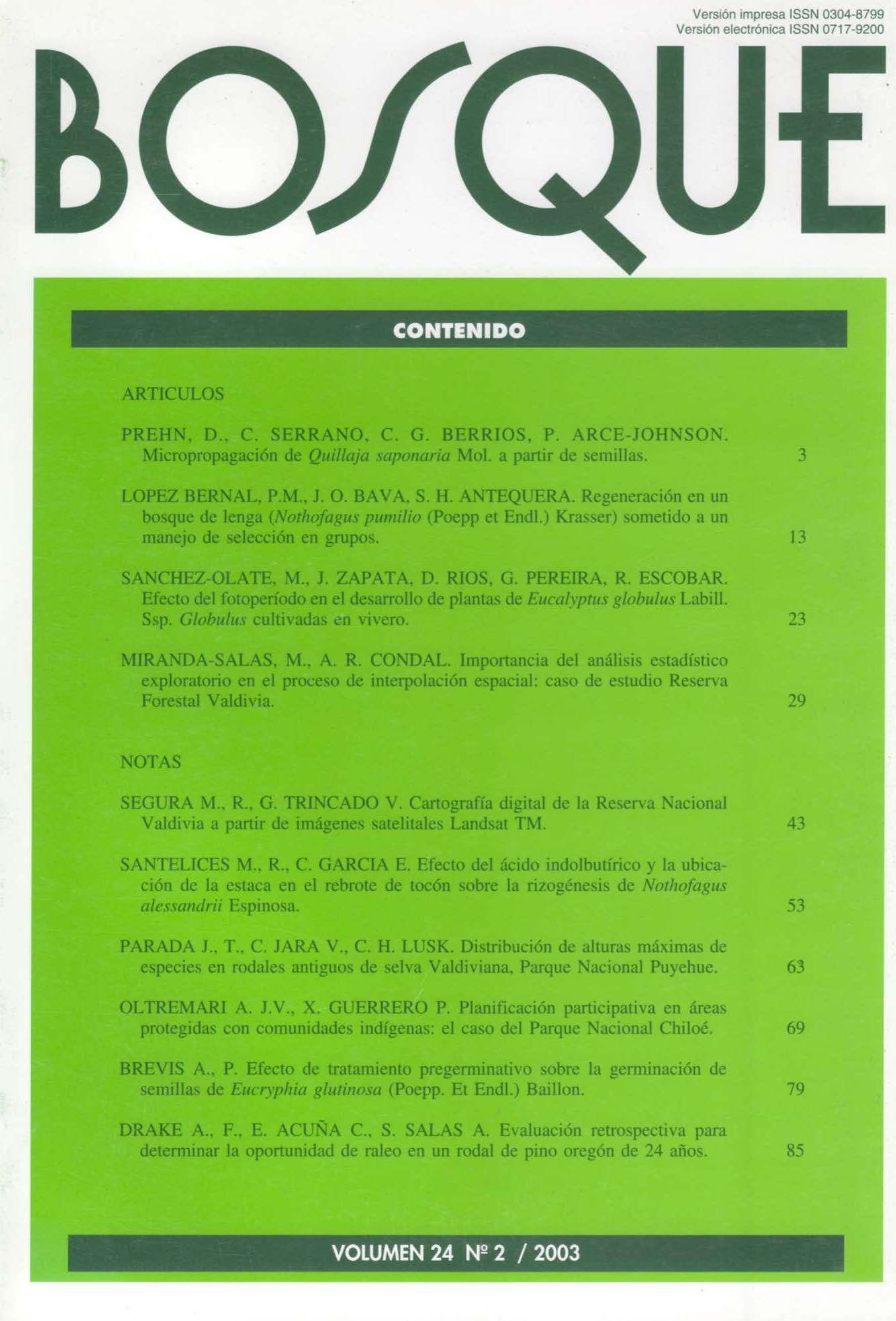Retrospective evaluation to determine a thinning opportunity in a 24-year-old Douglas-fir stand
Main Article Content
Abstract
A methodology to determine the thinning opportunity in an unmanaged 24-year-old Douglas fir (Pseudotsugamenziesii (Mirb.) Franco) stand was studied. Starting from information on cumulative growth and the mean annual increment (MAI) of the diameter at breast height (DBH), the age at which the maximum MAI was reached was determined. The basal area by hectare at which the maximum MAI was reached was then retroprojected. Considering the methodology used, a thinning program was proposed in which 775 trees per hectare were left. Four years after intervention, the stand effect of thinning on the remaining trees was evaluated. The number of trees remained constant and there was no presence of mortality. The basal area grew by 4.8 m3/year on average, with a cumulative annual increment of 28.35 m3/ha per year, which was 40.00 m3/ha per year in the last four years.

